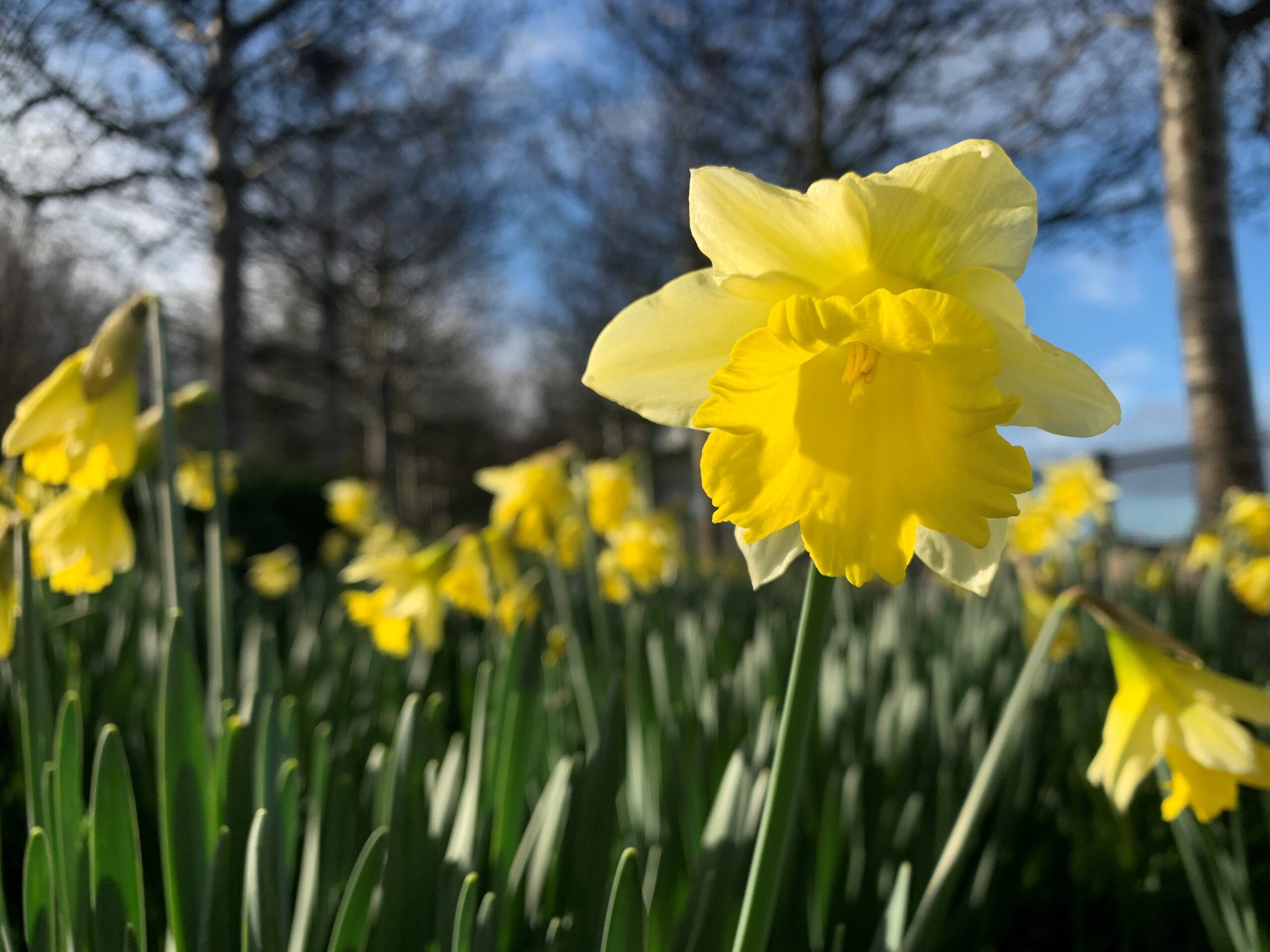March is the start of the meteorological Spring, but also brings some unpredictable weather – the old saying ‘in like a lion out like a lamb’ sums up the potential for frosts and snow, alongside mild sunny days! The big bonus this month is days at last extending into evening, and with the Spring equinox on March 22nd daytime finally outweighs the night. The snowdrops are beginning to fade, but crocus and daffodils follow on, and the woodland flowers; primrose, wood anemone, wild garlic make the most of the light before the leafy canopy fills in above.
Garden Updates
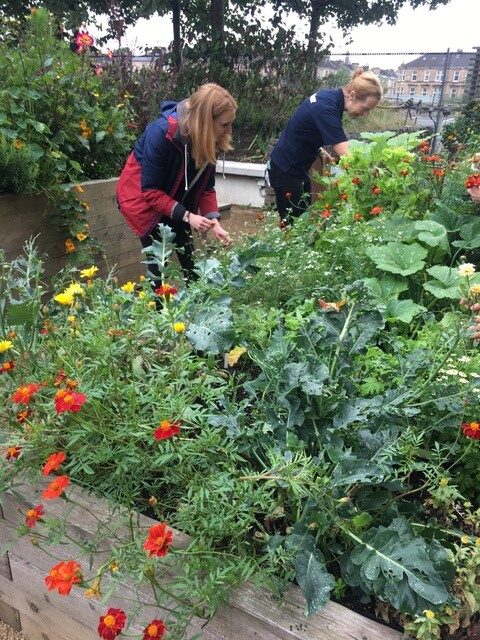
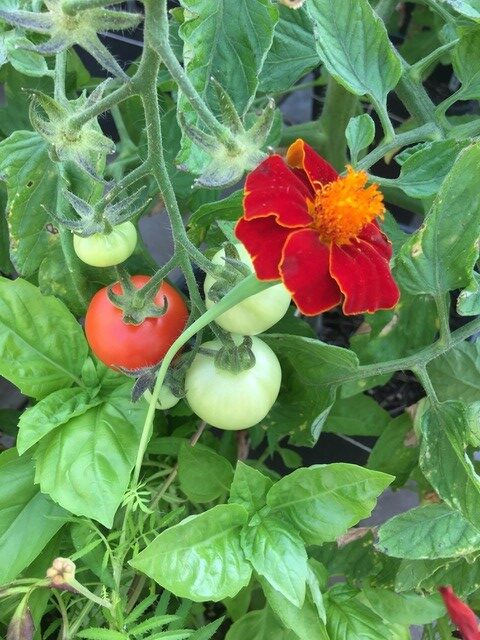
Seed sowing has finally begun, although tentatively as it is still some time before seedlings will be able to survive outside, and if too many are started off now we will run out of greenhouse and windowsill space. We are starting with the greenhouse crops such as aubergine and chilli that need high temperatures to germinate and a long growing season. We will hold off from sowing tomatoes and cucumbers until later this month, then launch into the flowery hardy and half hardy annuals.
Outdoors, the flowery meadow annual cut has begun and we will assess carefully to ensure dominant plants are reduced and suckers of the vigorous blackthorn are removed. This is an exciting time to watch the various plants emerge and try to work out what is coming up before their flowers give them away.
Gardening for pollinators
Our series of Pollinator talks by Dr Miranda Bane have come to an end, but they have taken us to the start of the growing season and inspired us to consider all aspects of wildlife; whither in our own gardens, allotments, back courts or windowsills! In the final talk of the series, Miranda highlighted some of the practical things we can do for pollinators. We are all adapting to the way we think about gardens and urban greenspaces and realizing their importance, not just for our own health and wellbeing, but also for biodiversity, the environment and the changing climate.
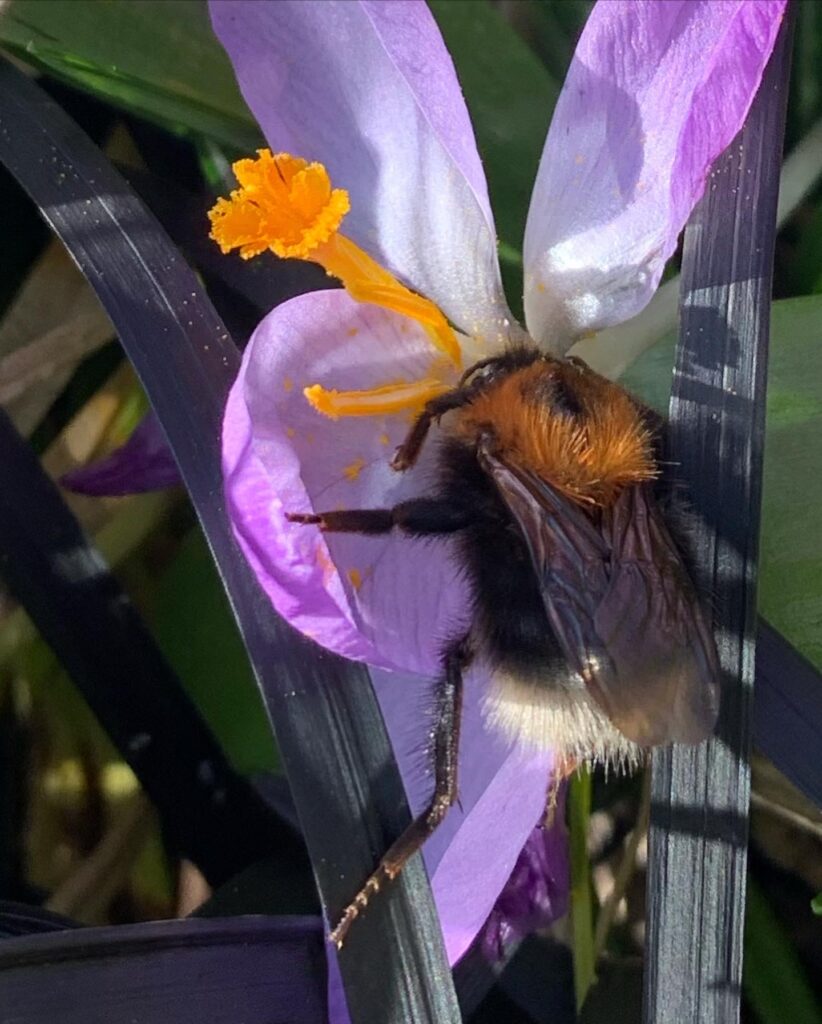
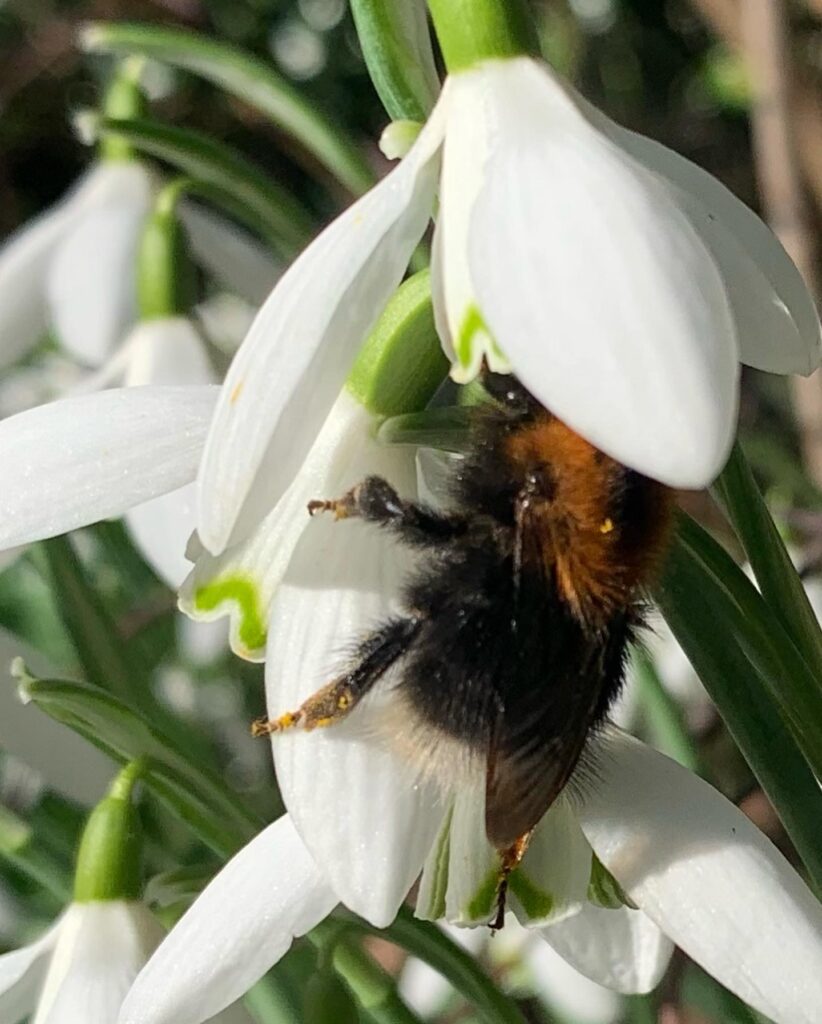
One of the most important things we can do is banish pesticides from our gardens. By planning for healthy plants and soil, and using companion planting and beneficial plants, we can ensure pesticides are not needed, and the garden is a haven for pollinators and beneficial insects.
Studies are increasingly showing the importance of a healthy soil environment, with relationships between the plant roots and the soil fungi creating a protective area called the rhizosphere. By reducing the amount we cultivate the soil, using mulches and planting perennials, this relationship between plant roots and soil organisms is allowed to flourish. Adding a mulch of garden compost benefits the soil food web by creating a flow of nutrients from decomposing plant material back into the soil. The plant material is broken down by fungi and bacteria then passed through tiny microbes such as nematodes and protozoa. These in turn are consumed by beetles and earthworms, centipedes and spiders, opening up the soil structure and releasing nutrients back in a form available to the plants. Most disease causing microorganisms are anaerobic (living without air or oxygen) and are out competed and often consumed by beneficial aerobic microbes in a healthy well aerated soil. Above ground, a healthy plant will also release sugars and carbohydrates that attract beneficial microbes. Studies also show that healthy plants will release chemicals that deter pests, resulting in the pests moving on to attack weaker plants elsewhere. So healthy plants growing in soil rich in organic matter, and in a suitable climate, will not be susceptible to pests and diseases. If pests do come their way, the plants will have the strength and resources to fend them off.
Plants also provide a natural pharmacy for the garden. Companion planting has long been practiced and is an organic way of creating beneficial plant communities, where one plant is planted alongside another to provide protection from pest or disease. For example, when nasturtiums are planted alongside cabbages, the cabbage white butterfly lays her eggs on the nasturtiums and the caterpillars munch their way through these leaves rather than your cabbages.
Underplanting roses with a salvia from the microphylla or jamensis varieties, such as the Salvia jamensis ‘Hotlips’ grown here, will prevent mildew and blackspot due to release of a sulphorous compound from its leaves, particularly on a warm sunny day. Sulphur has long been used as a fungicide, but growing these pretty plants is a much more attractive option!
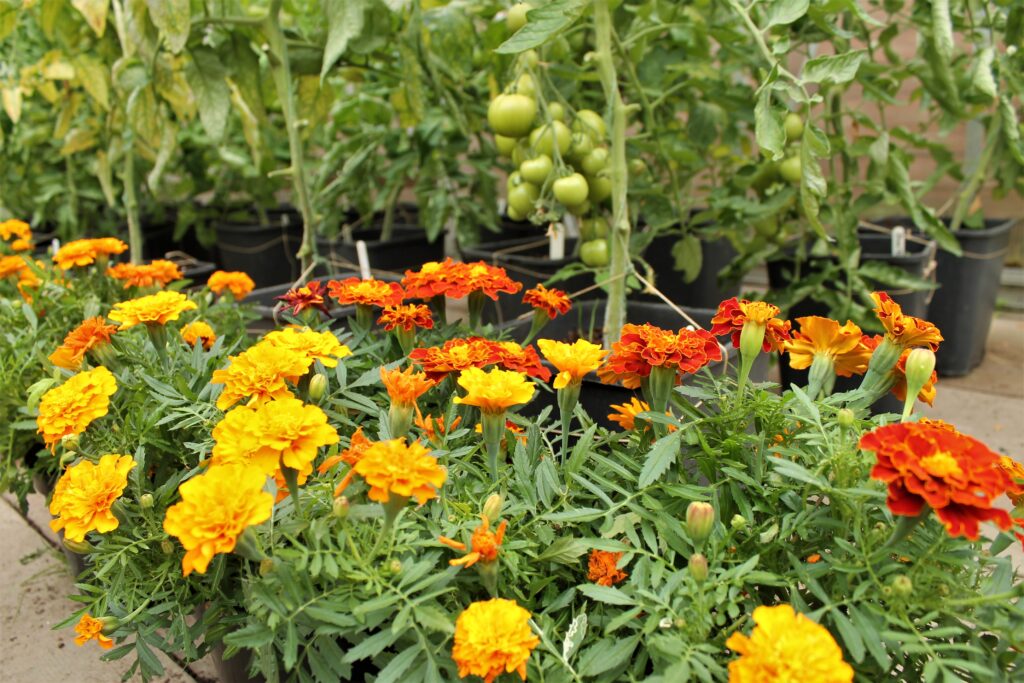
Tagetes or French marigolds deter whitefly and are the perfect companion for tomatoes and cucumbers. They release a voltatile oil, limonene, which repels these insect pests. Basil and other citronella scented plants are often grown to keep mosquitoes away but are also useful in keeping pests away from tomato plants and what could be nicer than a freshly picked tomato and basil salad.
Tagetes minuti is a tall variety of marigold with small insignificant flowers that is often grown to suppress perennial weeds such as ground elder. Its roots secrete a natural herbicide which, over time, will eliminate the weeds without reaching for harmful chemicals.
Homemade sprays are also useful and cheaper (often smellier though!) Garlic spray will deter aphids and can be made by blitzing a bulb of garlic with 250ml water, making up to one litre, leaving to settle before sieving and then spraying regularly as a preventative measure. Chopped chive spray will prevent powdery mildew, a common problem in dry weather. We have a susceptible apple tree as the wall it grows against creates particularly dry conditions, so I will be trying this out!
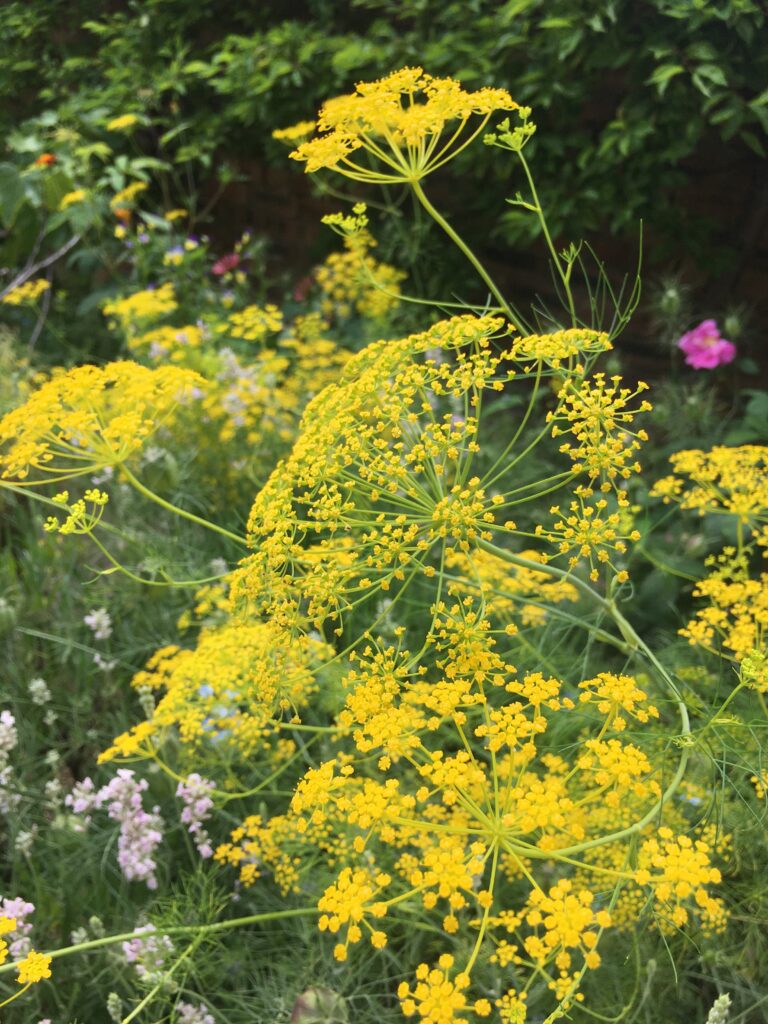
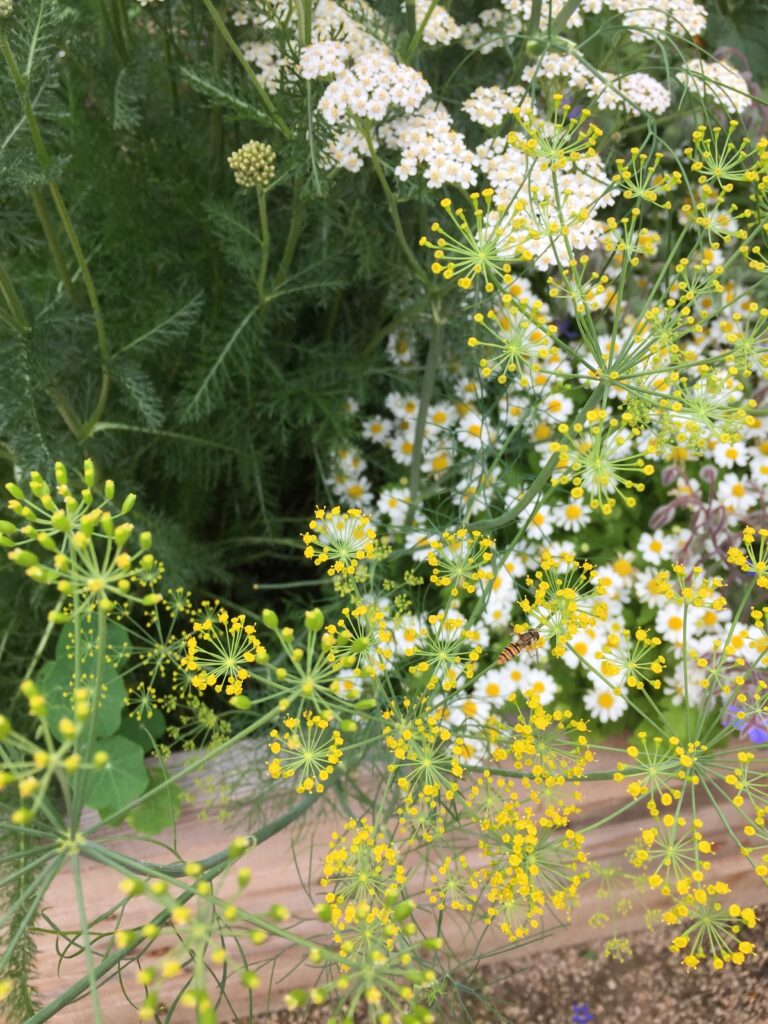
Preventing infestations is the best way of not needing pesticides. Fill your garden with as many beneficial insects as possible, and attract them in with an abundance of flowers; umbels such as dill, fennel, ammi and wild carrot for hoverflies and parasitic wasps; open flowered cosmos and dahlias for bumblebees and butterflies; herbs such as marjoram and thyme, lavender and sage. Native wildflowers are not only a great source of nectar and pollen, but are often the food plant for caterpillars of butterflies. Ground beetles, frogs, toads and birds will help to keep your slug and snail populations in balance, so don’t rush to clear the fallen leaves from your garden as they provide another layer of habitat for these valuable garden friends.
Nature notes
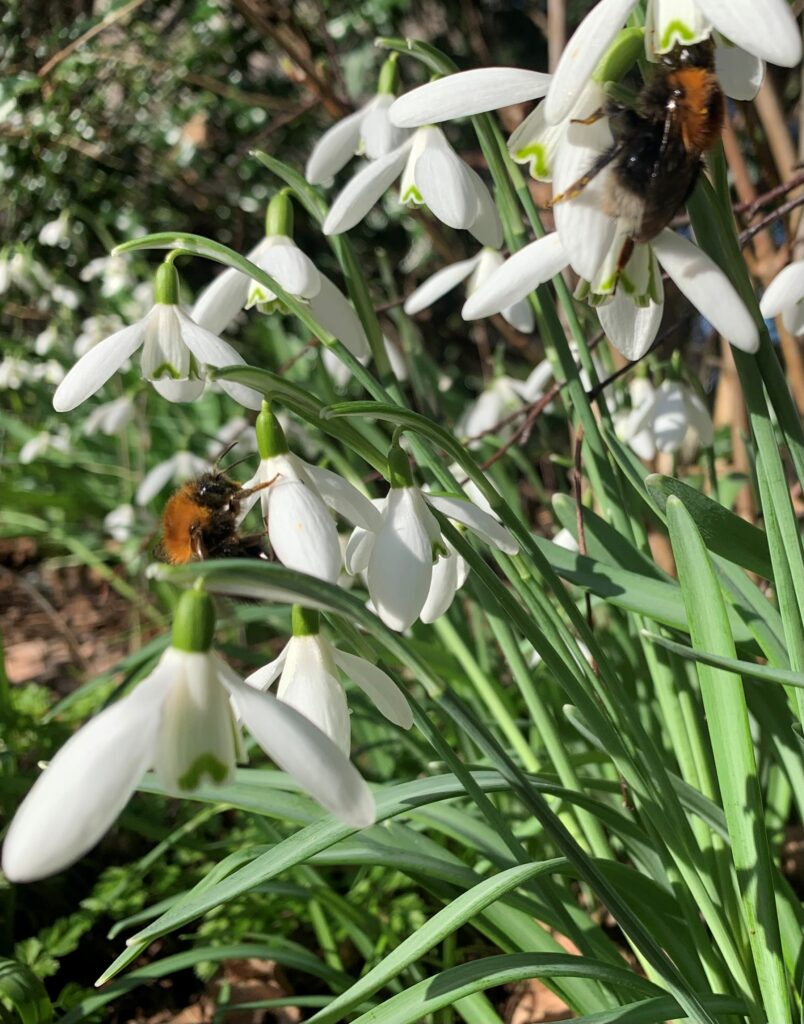
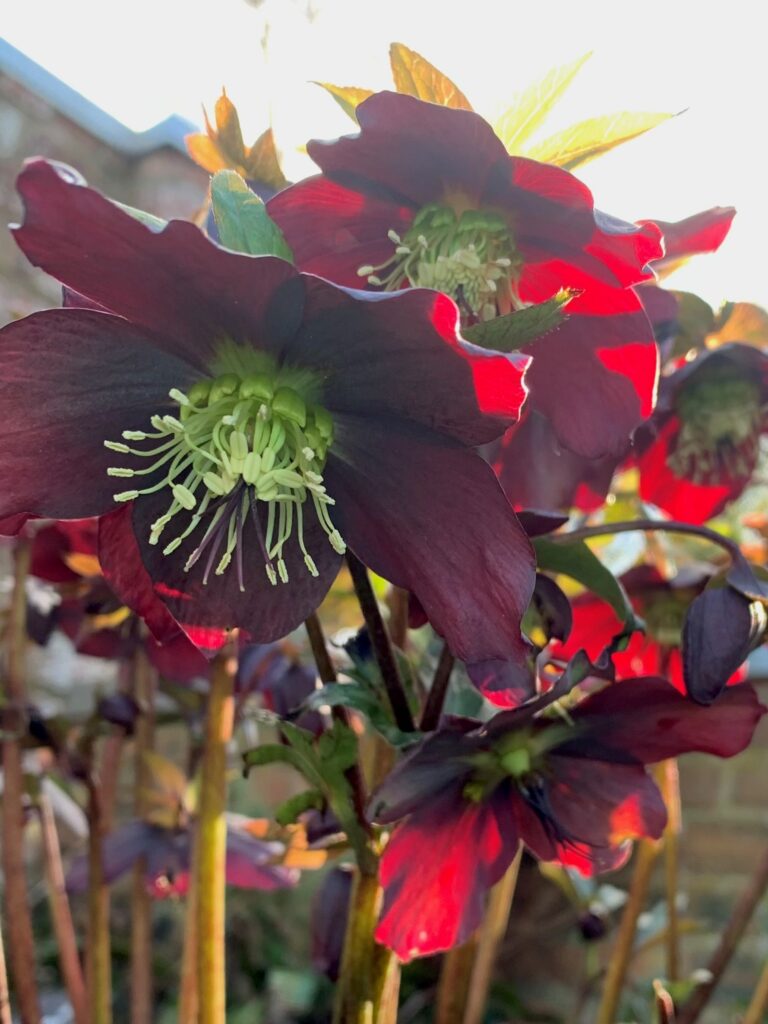
Activity is increasing in the gardens this month with so much to note in Nature’s Calendar, as each day bring new leaf buds and blossom. Blackthorn blossom appears before the leaves, with hawthorn leaves unfurling before may blossom. The cheery lesser celandines will be opening their star shaped yellow flowers to provide much needed nectar for newly emerging bumblebees and butterflies. Watching the tree bumblebees in the snowdrops and the buff-tailed bumblebees enjoying the crocus is a timely reminder of how important these early blooms are for wildlife in the garden.
The increase in bird song in the Gardens is notable, and we heard the first song thrush in the Gardens last week. Look out for blackbirds and bluetits collecting nesting material as they check out potential nest boxes.

